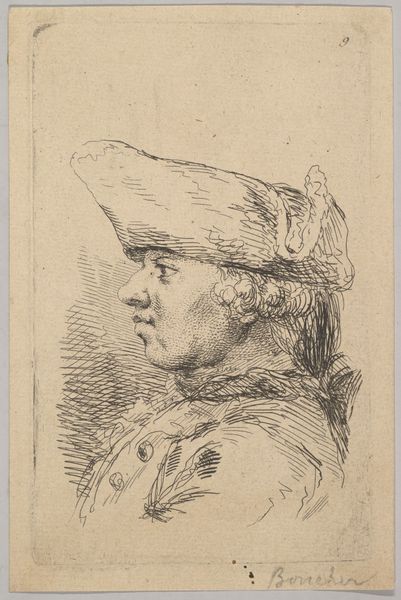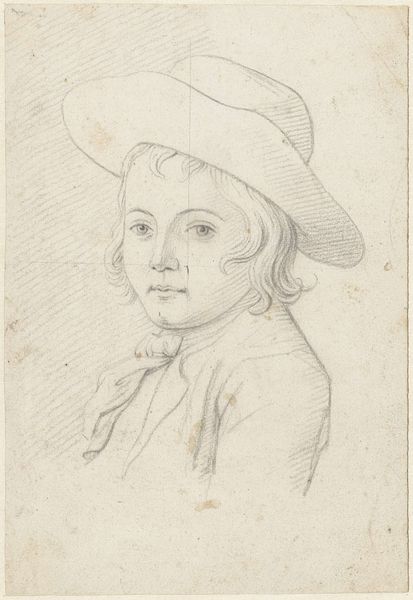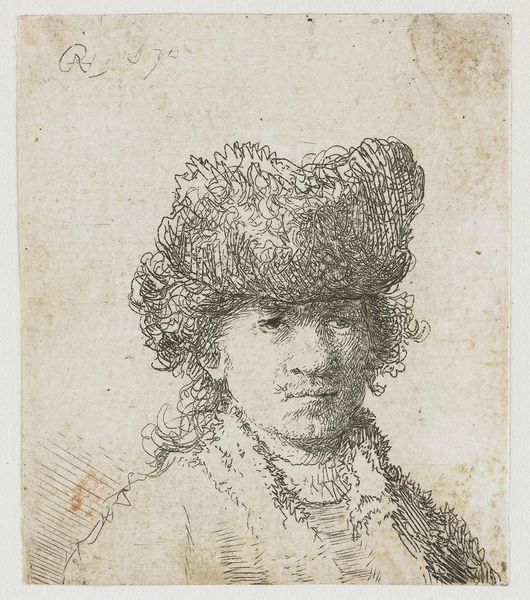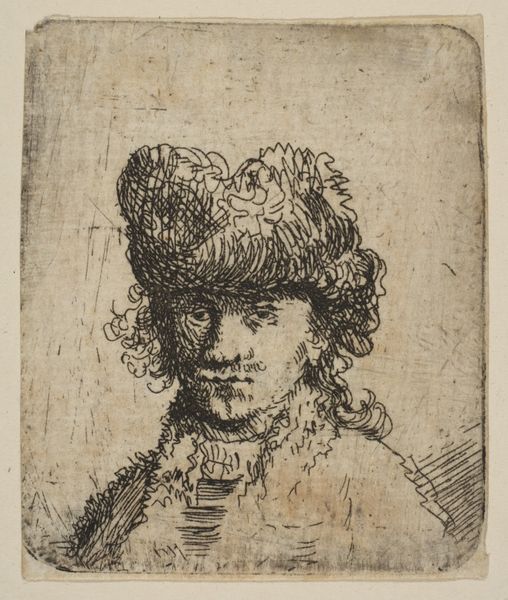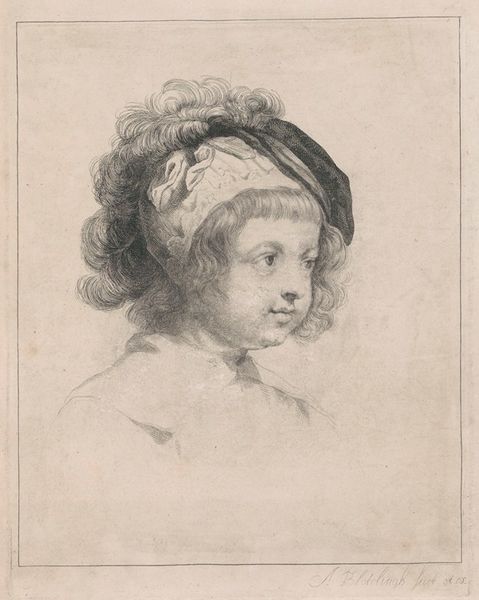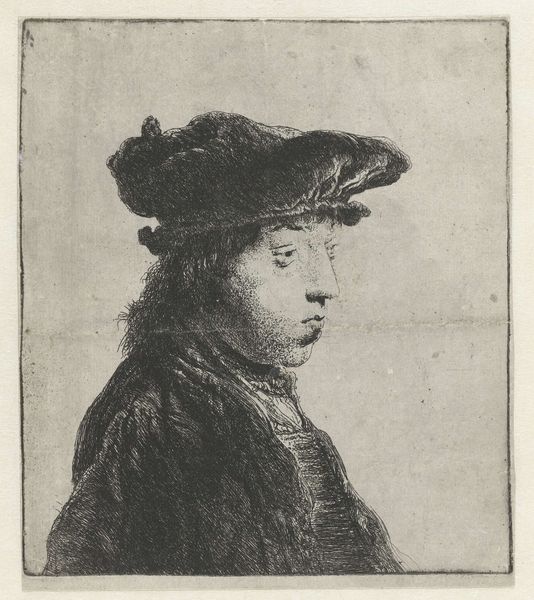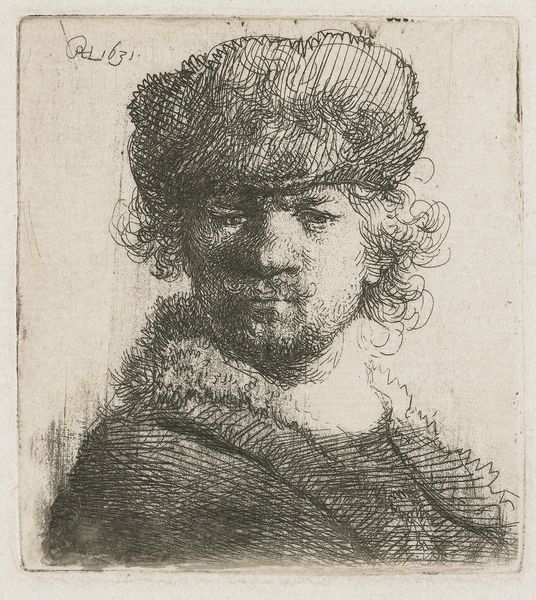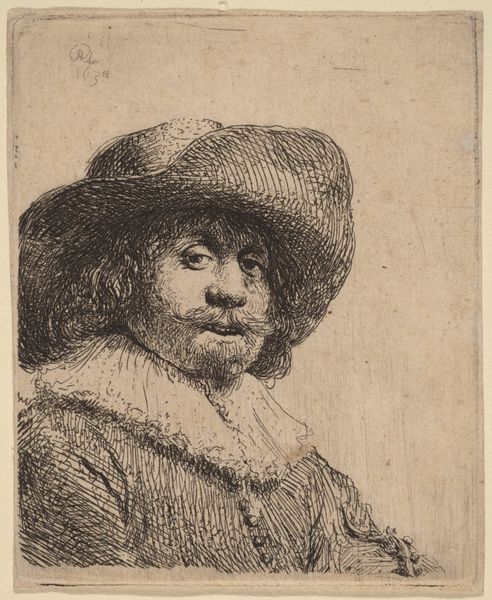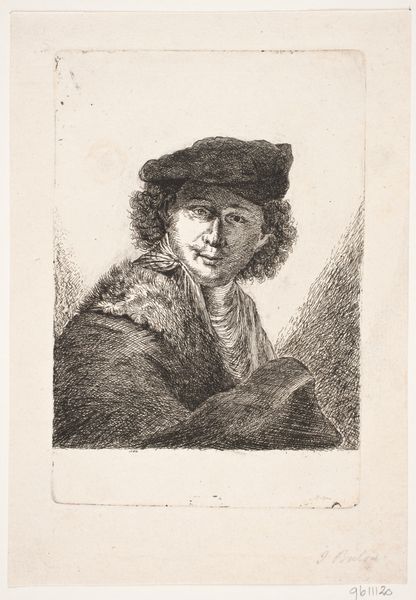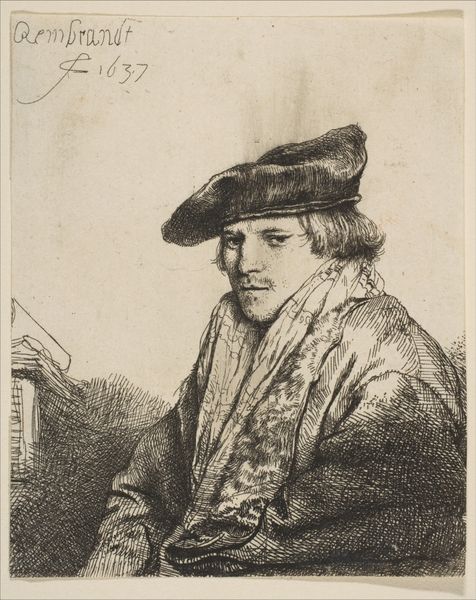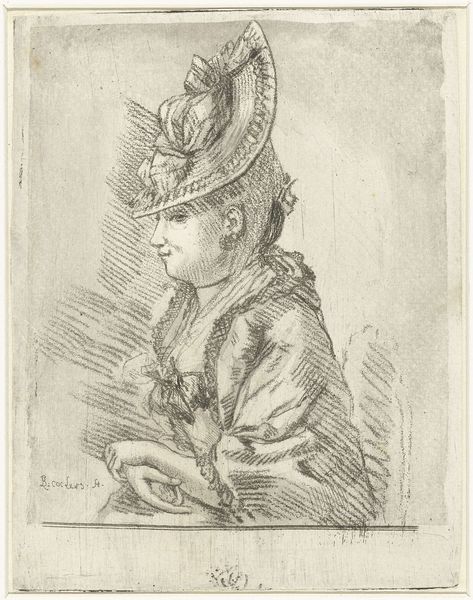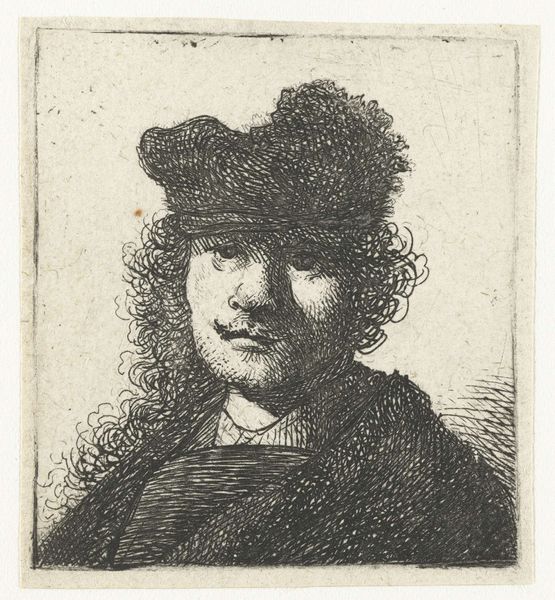
Dimensions: 103 mm (height) x 77 mm (width) (plademaal)
Editor: Here we have "Brystbillede af en Dreng" which roughly translates to 'Bust Portrait of a Boy' by W.A. Müller, created sometime between 1733 and 1816. It’s an engraving, which I find interesting given the time period. What stands out to you about this print? Curator: What strikes me is the economic accessibility afforded by printmaking. This wasn't an oil painting commissioned for a wealthy family; this image could circulate more widely. Consider the materiality: the paper itself, likely inexpensive, and the repeatable process of engraving. How does that influence our perception of the boy depicted? Editor: I see what you mean. It's not about glorifying wealth but potentially capturing a more everyday likeness. Does the print medium affect how Müller approaches the portrait itself, technically? Curator: Absolutely. Think about the labor involved. Engraving is meticulous, repetitive. Each line meticulously carved to create tone and form. It transforms the artist's role into that of a craftsman, replicating and disseminating the image. Editor: So, is it fair to say the *making* of the art holds as much weight as the art itself? How are those class dynamics influencing what Müller chose to create? Curator: Precisely. Look at the hat and costume. While somewhat fashionable, the relative lack of detail and the almost sketch-like quality, achieved through engraving, suggest a different kind of patronage. Perhaps appealing to a growing middle class. Editor: I see it. The print, through its own materiality and means of production, offers a window into the social dynamics of art consumption. Curator: Exactly. The engraving process reveals the democratization of image production. Instead of seeing it merely as a baroque portrait, we begin to recognize it as a manufactured commodity reflecting societal consumption. Editor: Thanks for making me consider what the choice of print adds to this little portrait. It completely shifts my understanding of it. Curator: Indeed, looking at art through the lens of its production always provides an alternative perspective.
Comments
No comments
Be the first to comment and join the conversation on the ultimate creative platform.
